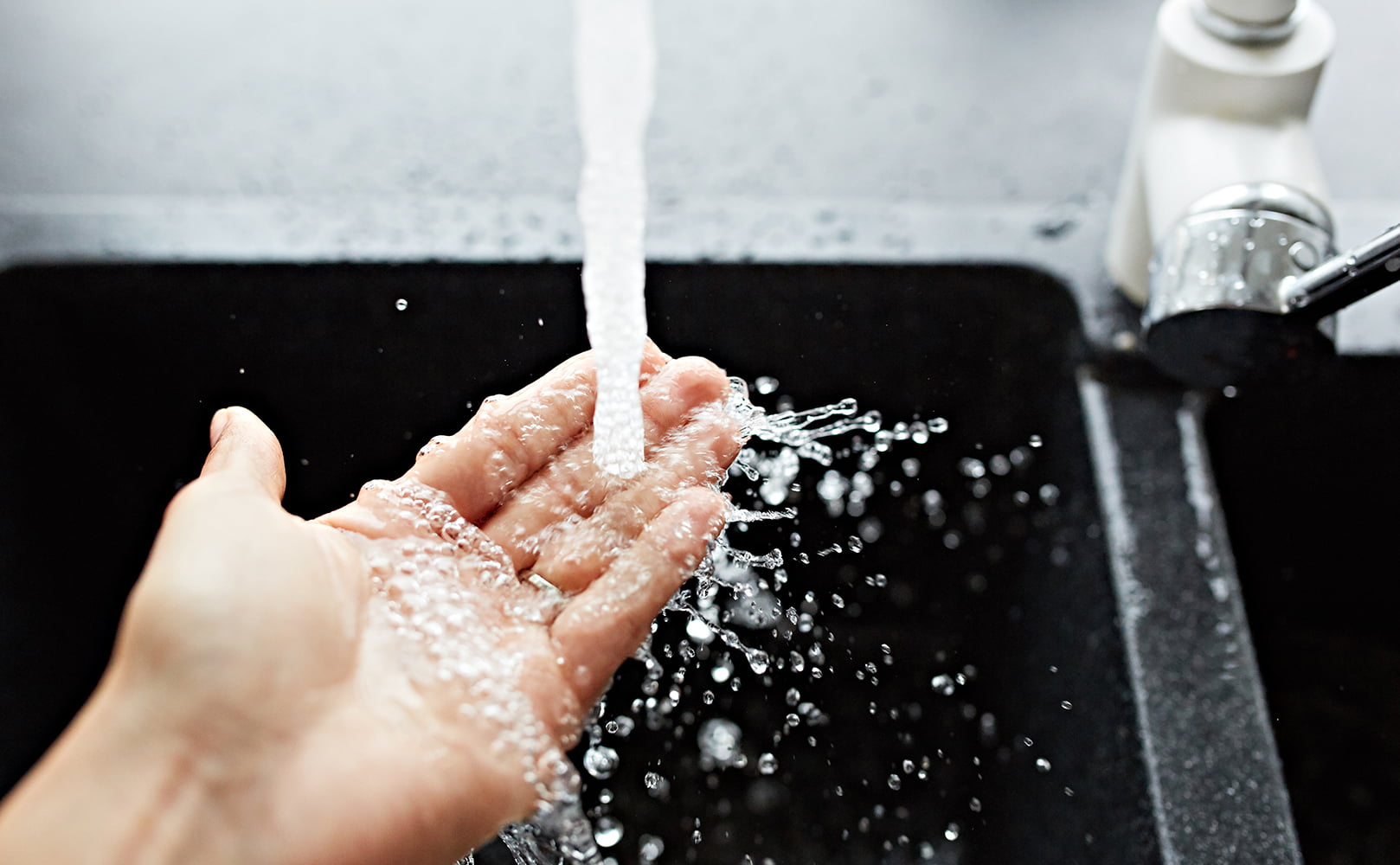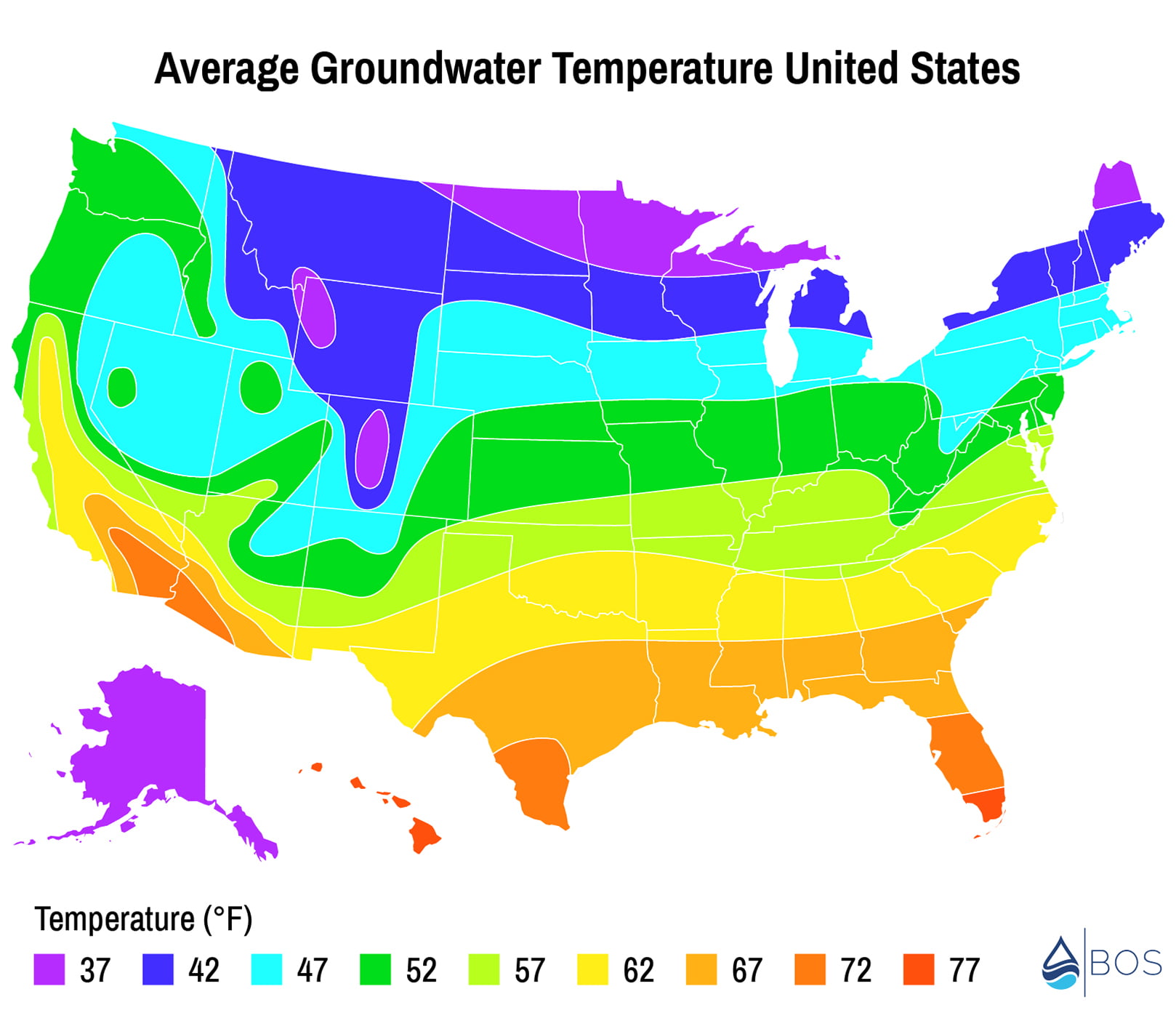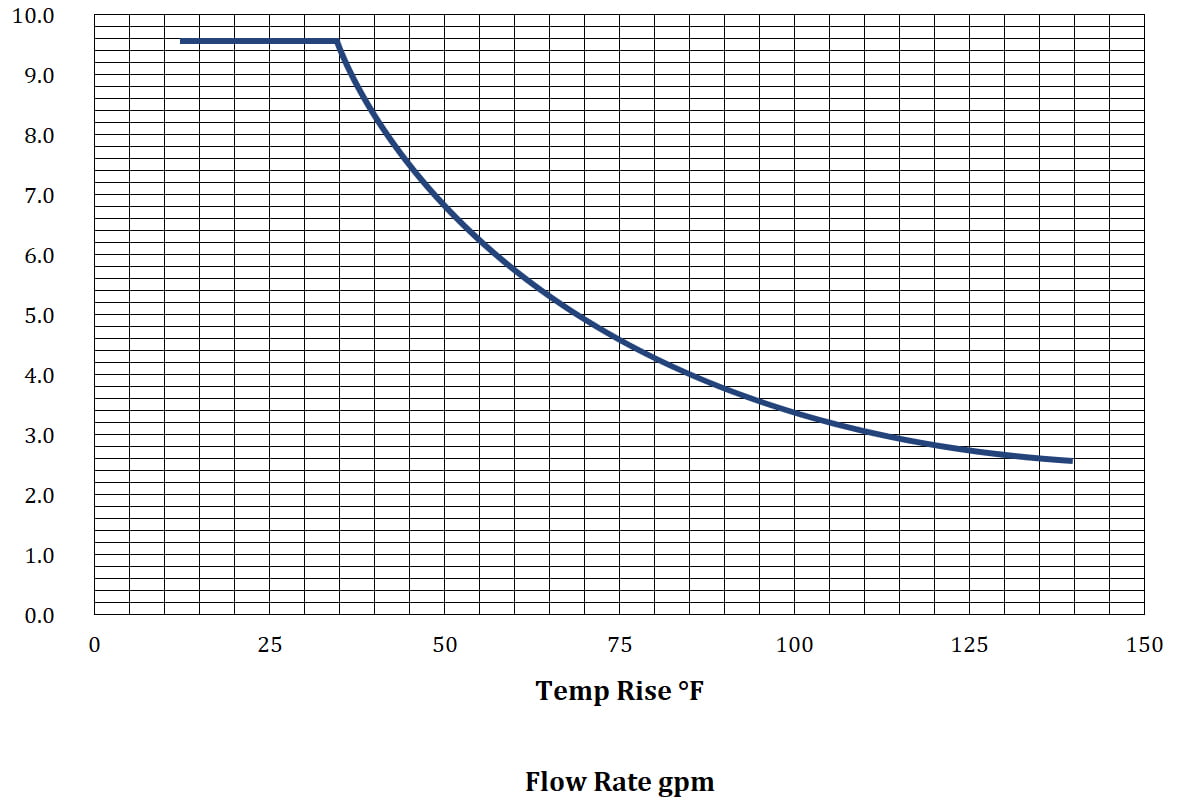What Size Tankless Water Heater Do I Need? (+ Sizing Calculator)
Written by: Gene Fitzgerald // Last Updated: Oct 11, 2022
This page may contain affiliate links. If you buy a product or service through such a link we earn a commission at no extra cost to you. Learn more.
Tankless water heaters provide endless hot water on demand. Furthermore, they can reduce your utility bills by more than 30 percent due to the elimination of standby energy losses, they are about the size of a suitcase and therefore space-saving, and they last up to 20+ years which is almost twice as long as what you get out of a regular tank-based unit.
However, tankless water heaters are limited by how much water they can heat at any given time. Choose too small of a system and it won’t have the capacity to provide enough hot water to meet your household needs. Go too big and you will overpay. This is why proper sizing is key – before making a purchase.
This buying guide will walk you through the process of sizing a tankless water heater and also shed light on other aspects that you have to consider when shopping.
Key Takeaways
There are 2 things to consider in determining what size of tankless water heater you need:
- Required gallons per minute of hot water flow at peak consumption.
- Required temperature rise (feed water temperature to output water temp).
- Once you know these, you can look for a tankless water heater that can meet those requirements.
- Tip: Choose one that either meets or exceeds your peak hot water demand.
How to Size a Tankless Water Heater
Simply put, tankless a.k.a. on-demand water heaters are rated by their maximum output water flow rate at a specific temperature rise.
So, in order to size a tankless water heater you have to consider 2 things:
- How many gpm (gallons per minute) of hot water you need at times of peak consumption. Remember, tankless water heaters don’t store any water but heat it as it flows.
- The required temperature rise which is determined by feed water temperature and output water temp settings.
What if you undersize?
Bad idea! If the required hot water demand surpasses the possible maximum, even if only temporary, most water heaters will throttle the flow automatically. This means less hot water at every outlet and therefore a temperature and/or pressure drop.
In addition, a tankless water heater that runs at full speed all the time is more likely to break down prematurely.
What if you go too big?
Oversizing is not that big of a deal. The only issue is unnecessary upfront cost.
Step 1: Flow Rate – How Many GPM for a Tankless Water Heater
Let’s start by figuring out your peak hot water demand. You can use the chart below for this. It lists the standard flow rates of different types of water outlets sold in the U.S. Of course, you could also look up your specific fixtures etc. online or check their product manuals.
Simply determine which devices you want to be able to run simultaneously and how many of them. Then add up their flow rates.
For example, if you need 1 shower and 1 kitchen faucet running at the same time your required maximum water flow is:
2.5 gpm + 2.2 gpm = 4.7 gpm
For WaterSense-certified products, the required flow rate is:
2.0 gpm + 1.5 gpm = 3.5 gpm
Pretty simple! But before you get started, here are a few more tips:
- By planning for maximum demand at peak hours like in the morning you can ensure that you always have hot water at the ready no matter what. Above that, a tankless water heater that does not have to run at full capacity all the time is likely to last longer. At the same time, a little planning will allow you to reduce your peak demand significantly. This includes taking turns when showering, letting the dishwasher do its thing while everyone is out of the house, and preparing your food before or after the showers are finished.
- Obviously, you have to take into account not only the number of bathrooms in your home, but also how many people are living under one roof. 2 people can only use 2 showers at the same time, even in a 5-bathroom mansion.
- Ask yourself: Will the water heater serve your entire home or just parts of it?
- The flow rates listed below indicate total water output, so hot water PLUS cold water. In other words, showering with a 2.5 gpm shower head does not mean that all of the water will be hot. It is more likely that you mix in some cold to get the desired temperature. Thus, the actual hot water demand is somewhat lower.
- To reduce flow rates you could install low-flow aerators or fixtures.
| Water Outlet | Standard Flow Rate |
|---|---|
| Hand washing sink | 0.5 – 1.5 gpm |
| Shower head | 2.5 (2.0*) gpm |
| Bathroom faucet | 2.2 (1.5*) gpm |
| Bathtub faucet | 3.0 – 4.0 gpm |
| Kitchen faucet | 2.2 gpm |
| Washing machine | 23+ gallons per load, gpm hard to determine |
| Dishwasher | 6 gallons per load, gpm hard to determine |
*WaterSense certified products
Please note: Older fixtures are likely to have higher flow rates.
As you can see, we did not include flow rates for washing machines and dishwashers. This is because we found it very difficult to get reliable data on this. Some sources say 2 to 3 gpm, others 1.5.
What you could do is run each appliance separately and monitor your water meter and measure time. This will give you a rough idea of how much flow is needed.
Speaking of measuring, for a more scientific approach to determining your peak water flow you can take a 1-gallon bucket and track how long it takes your shower head, kitchen faucet, bathroom taps, etc. to fill it. Then use the following formula to calculate the flow rate for each outlet:
Flow rate = 60 / Seconds required to fill bucket
If you don’t want to waste a full gallon per outlet, only fill a quart and use this formula instead:
Flow rate = 15 / Seconds required to fill ¼ bucket
Step 2: Temperature Rise
The next step is to determine your required temperature rise. Here all you have to do is subtract the temperature of your feed water from the desired output water temp.
Required temp rise = Output water temp – Feed water temp
How can you find out what temperature your feed water has? You have two options:
- Measure with a thermometer
- Use our awesome U.S. average groundwater temperature map
Please note: These are average temperature estimates. Real temperatures vary with season and weather.
As you can see, where you live in the country plays a huge role as far as average groundwater temperature is concerned. In warmer climates in the south, the temperature will naturally be higher, up to 77 °F in southern Florida. Whereas in Alaska, parts of North Dakota, Minnesota, Wisconsin and other states in far northern regions the groundwater temp can be as low as 37 °F.
Now, this makes a big difference as to how much a tankless water heater has to work to bring water up to the desired temperature. Let’s say you live in Michigan with 40 °F average feed water temperature. And you aim at 110 °F output temp. The required temperature rise would be
110 °F – 40 °F = 70 °F
A water heater installed in a home in Texas with 70 °F inlet water temp has to warm up the water by as little as
110 °F – 70 °F = 40 °F
By the way, 105 to 115 °F output water temp is considered ideal for everyday household use. 105 °F is considered the upper end of the temperature range most comfortable for showering. At your kitchen sink you want something around 110 °F.
Step 3: Putting It All Together
Okay, you know your hot water demand at peak hours as well as the required temperature rise.
The final step is to go out and look for a tankless water heater that meets these requirements. Basically all manufacturers provide sizing charts with their products that specify maximum flow rates at a given temperature rise or vice versa. Some manufactures also list flow rates for different input/output water temps.
You want to choose a unit size that either meets or exceeds your peak hot water demand.
Be aware, though, that manufacturers like to promote their products using best-case scenarios, so take the information with a grain of salt. Some companies tend to exaggerate with what their systems can do…
Ready for the next step? Check our electric tankless water heater reviews to find a system that perfectly fits your needs!
Video
Prefer video? Check this out:
Size Chart
Check out a few size charts and you will quickly notice that gas or electric makes a huge difference. Generally speaking, tankless gas water heaters are more powerful, meaning that they can produce higher gpm than electric units at the same temperature rise.
For example:
If your required temperature rise is 70 °F, a large tankless gas water heater can supply 5.0 – 5.5 gallons per minute. The largest electric unit (36 kW) maxes out at little more than 3.0 gpm.
Example Size Chart
For reference, this is what a tankless water heater sizing chart looks like:
This particular heater can provide 6.6 gpm at a 50 °F temperature rise and 4.8 gpm at 70 °F.
Popular Tankless Water Heaters
These are some real-life examples of popular tankless water heaters:
(Mobile Hint: Swipe to Scroll)
| Model | Fuel Type, Power | Temp Rise | Max GPM | # of Bathrooms |
|---|---|---|---|---|
| Rinnai V75iN | Natural gas, 180,000 BTU | 70 °F | 4.3 gpm | 1 – 2 bathrooms |
| 50 °F | 6.0 gpm | 2 – 3 bathrooms | ||
| Rinnai RU199iP | Propane, 199,000 BTU | 70 °F | 5.5 gpm | 2 bathrooms |
| 50 °F | 7.6 gpm | 3 bathrooms | ||
| Stiebel Eltron Tempra 36 Plus | Electric, 36 kW | 70 °F | 3.5 gpm | 1 bathroom |
| 50 °F | 4.75 gpm | 1 – 2 bathrooms | ||
| Rheem RTEX-18 | Electric, 18 kW | 65 °F | 2.0 gpm | 1 bathroom |
| 55 °F | 2.0 gpm | 1 bathroom | ||
| EcoSmart ECO 11 | Electric, 11 kW | 68 °F | 1.1 gpm | 1 bathroom |
| 48 °F | 1.56 gpm | 1 bathroom |
Frequently Asked Questions (FAQ)
1. What Size Tankless Water Heater Do I Need for a Family of 5?
This is almost impossible to tell. It depends on how many bathrooms and water using appliances you have, and the required temperature rise. Go through steps 1 to 3 in this sizing guide or use our tankless water heater sizing calculator and you will get an answer to your question – guaranteed!
2. What Size Tankless Water Heater Do I Need to Replace a 50-Gallon Water Heater?
Again, this is simply not enough information to give a reliable answer. It depends on how many bathrooms and water using appliances you have, and the required temperature rise. We recommend you go through steps 1 to 3 in this sizing guide or use our sizing calculator!
3. How Many Tankless Water Heaters Do You Need?
How many tankless water heaters you need depends on your peak hot water demand and required temperature rise (check sizing guide above).
In general, one tankless gas water heater should be enough to supply a mid-sized family/home. Electric tankless water heaters are perfect for smaller families and apartments.
In case of very high demand, consider installing 2 or more heaters, either at the point of use so they work separately from one another or in one central spot to work in tandem operating as a single unit.
Furthermore, although more expensive upfront, adding two smaller units in series can sometimes make more sense than installing one large one.
If you have any thoughts or questions about how to size a tankless water heater please don’t hesitate to leave a comment below!
Information provided on BOS is for educational purposes only. The products and services we review may not be right for your individual circumstances.
We adhere to strict editorial guidelines. Rest assured, the opinions expressed have not been provided, reviewed, or otherwise endorsed by our partners – they are unbiased, independent, and the author’s alone. Our licensed experts fact-check all content for accuracy. It is accurate as of the date posted and to the best of our knowledge.




